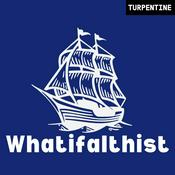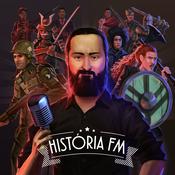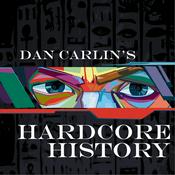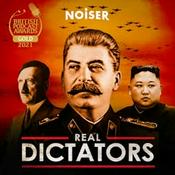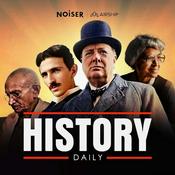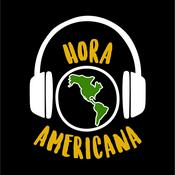The Bowery Boys: New York City History

540 episódios

#477 Chester A. Arthur: The Gentleman Boss
02/1/2026 | 46min
On Lexington Avenue sits a special food store named Kalustyan's with a second floor stocked with international spices, syrups, and bitters. In 1881, this was the home of Chester A. Arthur, and it was here in the early morning hours of September 20, that he became the 21st President of the United States.He is one of only two men inaugurated as president in New York City -- the other was George Washington. And Arthur was certainly no Washington!Fans of the Netflix series Death By Lightning have already been introduced to Arthur's rugged, street-toughened personality, an efficient operator of Republican politics in a city governed by Democrats and Tammany Hall. He was quite famous, in fact, for converting Tammany men to Republican voters by using similar bare-knuckle tactics.He eventually became the Collector of the Port of New York, one of the most lucrative jobs in American government. And then, through a strange series of events, he was catapulted onto the national ticket for president as the running mate of James Garfield.But nobody really wanted the New Yorker for president, did they?This is a story not only of a man out of his depth, but of the two very different individuals who helped hone his reputation -- the New York power broker Roscoe Conkling, and the Upper East Side recluse Julia Sand, who may have helped guide Arthur through the most challenging moments of his 'accidental' presidency.PLUS: How Madison Square Park has become one of the only true monuments to his legacy.Visit the website for images and more information about this story.This episode was produced and edited by Kieran Gannon. Hosted by Simplecast, an AdsWizz company. See pcm.adswizz.com for information about our collection and use of personal data for advertising.

#476 Hot Victorian Holiday: Bowery Boys History Live! at City Winery
23/12/2025 | 1h 15min
Bowery Boys History Live is a live-show series at City Winery hosted by Greg Young featuring a variety of historians and tour guides. The last installment this summer featured author Liz Block and tour guide Keith Taillon. As live performances, they're a bit more loose and irreverent than the regular podcast and sometimes feature references to images being projected on stage.As a special holiday bonus, step into the season with this festive dose of “Hot Victorian” history, naughty-list edition.Join Greg Young of the Bowery Boys Podcast as he hosts this special holiday edition of Bowery Boys History Live!, recorded before a live audience at New York’s City Winery on Dec 12, 2025.Featuring an all-star lineup: Carl Raymond of The Gilded Gentleman Podcast, Aaron Radford-Wattley—creator and author of Hot Victorians: Meet Your Dream Man from the Past—and historian and tour guide Kyle Supley — aka the clock whisperer.So pour yourself some eggnog, cozy up by the fire, and enjoy live shenanigans full of holiday history and vintage comedy. Hosted by Simplecast, an AdsWizz company. See pcm.adswizz.com for information about our collection and use of personal data for advertising.

#475 Subway Tokens, MetroCards and Other Historic Fare
19/12/2025 | 1h 16min
New Yorkers have gotten around their cities by subways, buses, elevated trains, streetcars and ferries. And the ways in which they have paid for them have changed as well. And keeps changing!This month, the city is saying farewell to the MetroCard, the magnetic-stripe card that has gotten the town moving since the early 1990s. When the orange cards debuted, they replaced the strange physical tokens commuters had been using since 1953.Mass transit fares were also a key issue in the past New York mayoral race — and they’ve always been a key issue for voters since the late 19th century. That’s part of the reason that fares famously remained five cents for decades. But as the subway system expanded, stretching through Brooklyn, Queens, and the Bronx, it soon became evident that it was becoming too expensive to operate.But changing the price is one thing; going from currency to token to MetroCard to OMNI (our latest method) requires technical modifications of every station in the system. In 1953, that entire system changed — literally overnight — to accommodate the first tokens.Jodi Shapiro of the New York Transit Museum joins the podcast to discuss the museum’s latest exhibition, FAREwell MetroCard, which celebrates the newly retired fare system.This episode was edited and produced by Kieran Gannon Hosted by Simplecast, an AdsWizz company. See pcm.adswizz.com for information about our collection and use of personal data for advertising.

The Great Fire That Transformed New York
12/12/2025 | 34min
This month marks the 190th anniversary of one of the most devastating disasters in New York City history — The Great Fire of 1835.This massive fire, among the worst in American history in terms of its economic impact, devastated the city during one freezing December evening, destroying hundreds of shops and warehouses and changing the face of Manhattan forever.It also underscored the city’s need for a functioning water system and a permanent fire department.So why were there so many people drinking champagne in the street? And how did the son of Alexander Hamilton save the day?PLUS We give you a another reason to check out the Stone Street Historic DistrictTo mark this special anniversary, we have newly remastered and edited our classic Bowery Boys podcast on this subject which was originally released on March 13, 2009This episode was produced by Kieran Gannon Hosted by Simplecast, an AdsWizz company. See pcm.adswizz.com for information about our collection and use of personal data for advertising.

#474 Made in France: The Statue of Liberty’s Forgotten Origin Story
05/12/2025 | 1h 21min
She stands in New York Harbor as America’s most recognizable symbol—but the story of the Statue of Liberty begins thousands of miles away, in the charming Alsatian city of Colmar, France.In this special on-location episode, Tom ventures to the picturesque town where sculptor Frédéric Auguste Bartholdi was born in 1834. Walking through Colmar’s cobblestone streets and half-timbered facades, Tom sits down with Juliette Chevée, curator of the Musée Bartholdi, to uncover the French side of this iconic American monument.Who was Bartholdi? What did the statue originally mean to the French republicans who conceived it at an 1865 dinner party? How did a rejected Egyptian lighthouse design become the template for Liberty’s form?And how did two Frenchmen—Bartholdi and the historian Édouard de Laboulaye—manage to convince a foreign country to accept a colossal structure without any government assistance from either France or the United States?This episode was produced and edited by Kieran Gannon Hosted by Simplecast, an AdsWizz company. See pcm.adswizz.com for information about our collection and use of personal data for advertising.
Mais podcasts de História
Podcasts em tendência em História
Sobre The Bowery Boys: New York City History
Ouça The Bowery Boys: New York City History, Easy Money: The Charles Ponzi Story e muitos outros podcasts de todo o mundo com o aplicativo o radio.net

Obtenha o aplicativo gratuito radio.net
- Guardar rádios e podcasts favoritos
- Transmissão via Wi-Fi ou Bluetooth
- Carplay & Android Audo compatìvel
- E ainda mais funções
Obtenha o aplicativo gratuito radio.net
- Guardar rádios e podcasts favoritos
- Transmissão via Wi-Fi ou Bluetooth
- Carplay & Android Audo compatìvel
- E ainda mais funções


The Bowery Boys: New York City History
baixe o aplicativo,
ouça.




